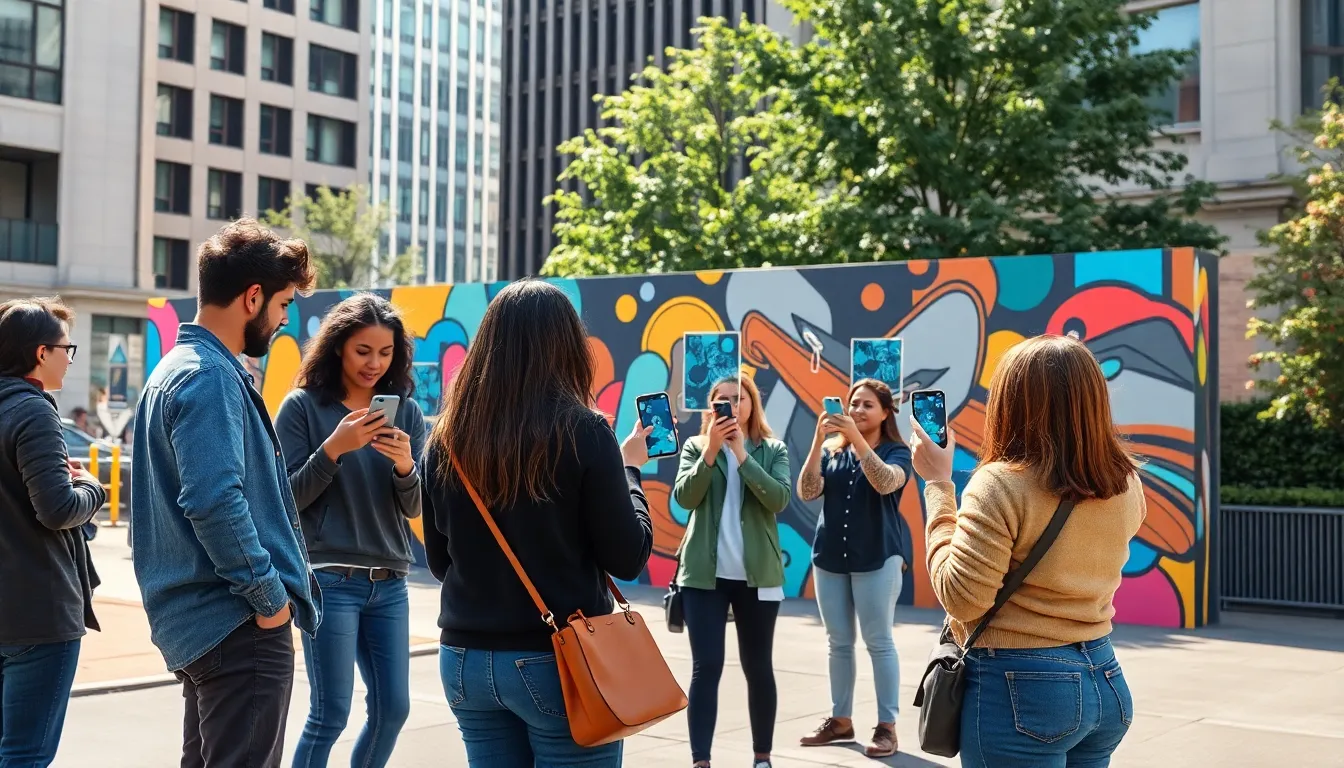Imagine stepping into a gallery and seeing paintings that come to life right before your eyes. Augmented reality art is doing just that, it’s not just colors and canvas anymore. It’s a wild mix of technology and expression that promises to change not only how art is created but how it’s experienced. So grab your smartphone and step into this brave new world where art meets technology, and prepare to be dazzled.
What Is Augmented Reality Art?

Augmented reality art blends the physical and digital realms, creating an experience that feels almost magical. In simple terms, it involves embedding digital elements, like 3D models or animations, into the real-world environment. When viewers point their devices at specific markers, images leap off the page or wall, revealing new layers and narratives that would otherwise remain hidden. Whether it’s holographic sculptures or interactive installations, augmented reality brings art to life in a way that traditional mediums simply can’t. Imagine a painting that reacts to your movements or a street mural that transforms when viewed through your smartphone, it’s a whole new dimension of creativity.
The Evolution of Augmented Reality in Art
The journey of augmented reality in art began in the early 2000s, but the concept has roots tracing back even further. As technology improved, artists sought innovative ways to engage audiences. Initially, AR was primarily a novelty, with basic applications showing 3D elements overlaid on physical surfaces. Fast forward to today, and artists use sophisticated tools that allow for immersive experiences. The rise of smartphones played a critical role, making access to AR technologies more widespread. Museums and galleries are now employing AR to enhance exhibits, inviting visitors to interact in ways they never imagined.
Key Technologies Behind Augmented Reality Art
Understanding augmented reality art necessitates a look at the technologies that enable these stunning experiences. At its core lies computer vision, which detects and tracks images or objects in the real world. Then comes depth tracking, enabling devices to perceive how far away objects are from one another. But the magic doesn’t stop there, GPS, accelerometers, and gyroscopes all play roles in delivering a seamless AR experience. Popular AR platforms like ARKit and ARCore have made development easier for artists, offering tools to create these engaging visual stories. With advancements like VR headsets, artists can push the limits of creativity even further.
Famous Augmented Reality Art Projects
Many projects have captured public imagination, showcasing the power of augmented reality in art. One standout is ‘The Night Cafe’ by Vincent Morisset, which recreated Van Gogh’s famous painting into a fully interactive 3D experience. Another noteworthy project is Ghostwriter, where users could interact with an AR animation superimposed over a cityscape, adding a narrative layer to everyday surroundings. Even landmarks like the Eiffel Tower have been enhanced through interactive AR experiences, turning them into living canvases. Each of these projects illustrates how AR can transform perceptions, making art more inclusive and accessible.
The Benefits of Augmented Reality in the Art World
Augmented reality art brings a plethora of benefits, starting with increased engagement. Viewers can interact with pieces, which fosters a deeper connection. Also, AR allows for storytelling in innovative ways: artists can convey messages that resonate on different levels and make an art piece’s context clearer. In education, AR serves as a powerful tool, offering students immersive learning experiences. Enhancing exhibitions in galleries encourages foot traffic and draws in diverse audiences, making art appreciation more universal. Overall, it promotes creativity while challenging traditional boundaries.
Challenges Facing Augmented Reality Art
Even though its promise, augmented reality in the art world is not without obstacles. Technological limitations present challenges, including the need for high-performance devices to adequately run AR applications. The learning curve for artists unfamiliar with new technologies can be steep, pushing some to abandon their AR ambitions altogether. Public accessibility is another hurdle: not everyone owns compatible smartphones or tablets, limiting viewing opportunities. Plus, there are ongoing debates about the authenticity and permanence of digital art versus traditional forms. Navigating these challenges will be essential as the field continues to evolve.
The Future of Augmented Reality Art
As technology advances, the future of augmented reality art looks incredibly bright. With innovations in AI, artists will likely explore new methods of interaction and engagement, pushing the envelope even further. Expect to see even more integration of AR into everyday life, blurring the lines between art and reality in unprecedented ways. Collaborative projects using AR could redefine how communities experience public art, making it a shared, collective journey. Also, as educational institutions adopt AR more widely, the next generation of artists will benefit from early exposure to these technologies, leading to exciting developments in how art is created and understood.
